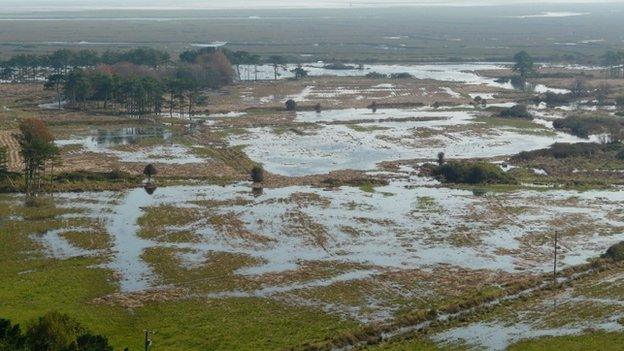British salt marshes 'to disappear' as sea levels rise
- Published

Salt marshes, also called coastal wetlands, are found around the British coast
Marshlands in south-east England could start to vanish in about 20 years due to rising sea levels, scientists warn.
Researchers at Durham University have studied sediment samples dating back 10,000 years to track how sea levels affect salt marshes.
They say marshes could disappear in south-east England from 2040 and across the rest of Great Britain by 2100.
Following the last ice age most of Scotland is rising while southern England is subsiding, they said.
Salt marshes protect coastal areas from erosion by acting as a buffer against waves and reducing flooding by slowing and absorbing rainwater.
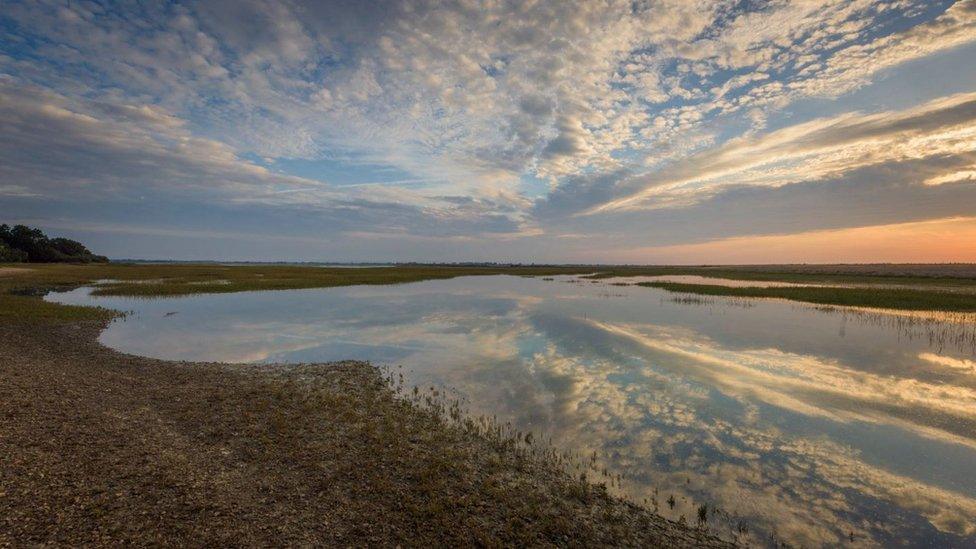
Coastal wetlands are flooded and drained by salt water brought in by the tides
Extensive marshes occur along major estuaries around Britain including the Thames, Solent, Bristol Channel, The Wash, Humber, Mersey, Solway Firth, Firth of Forth, Clyde and Cromarty Firth, as well as many smaller marshes around the coast.
Professor Benjamin Horton, who led the study at Nanyang Technological University, said: "Salt marshes are important transitional habitats between the ocean and the land, and a nursery area for fish, crustacea, and insects."
He said the report highlights "how quickly we are going to lose these ecologically and economically important coastal areas in the 21st Century".
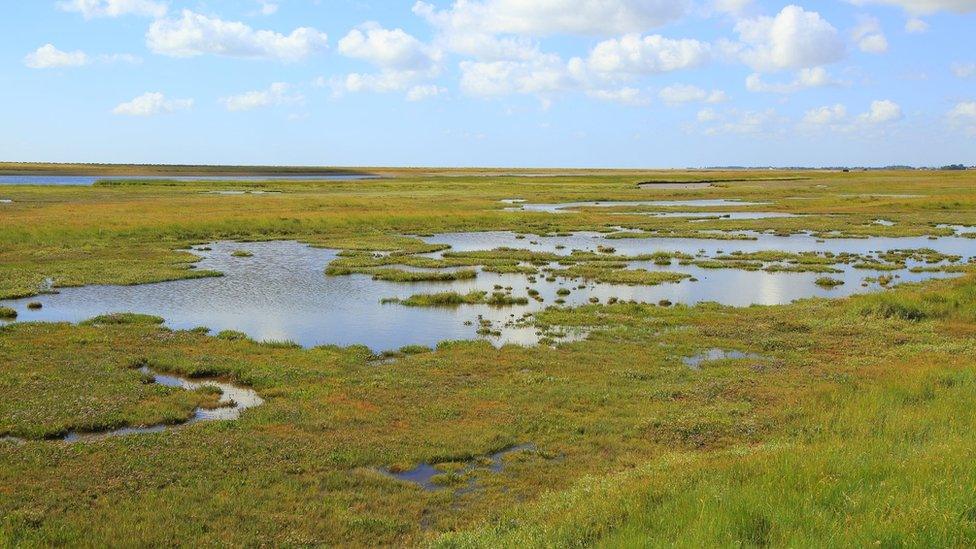
The marshes protect coastal land and are home to delicate ecosystems
The study, published in Nature Communications, external, shows that rising sea levels over the last 10,000 years have led to the increased water-logging of salt marshes, killing vegetation that protects them from erosion and resulting in the marshes retreating landwards.
Co-author of the report, Professor Ian Shennan from the department of geography at Durham University, said: "Sea level rise is inevitable over the next 100 years, as it has been over much of the last 10,000 years.
"The rates differ across Great Britain and we can model these differences."
Some areas, including Cuckmere Haven in East Sussex, are being allowed to flood to create new salt marshlands around the coast, under Environment Agency plans.
- Published30 June 2018
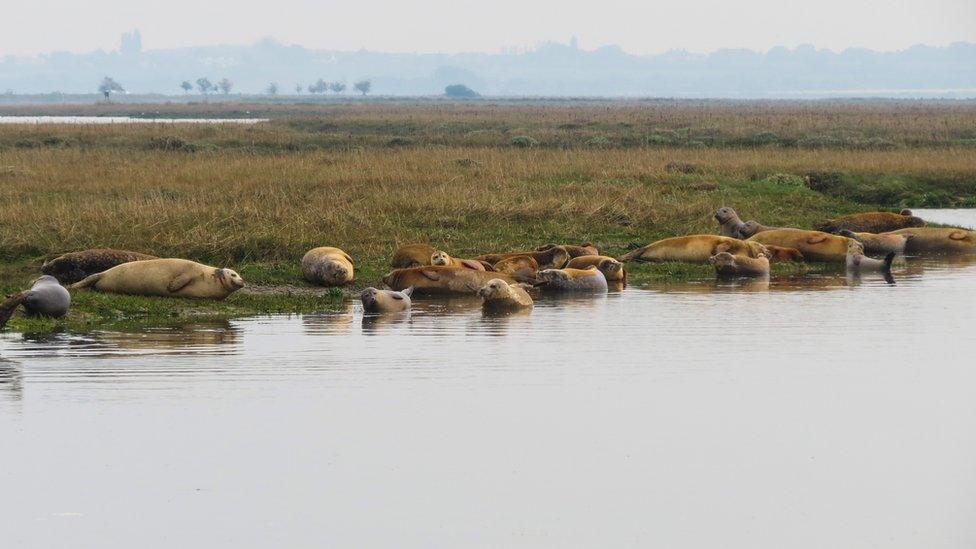
- Published21 September 2017
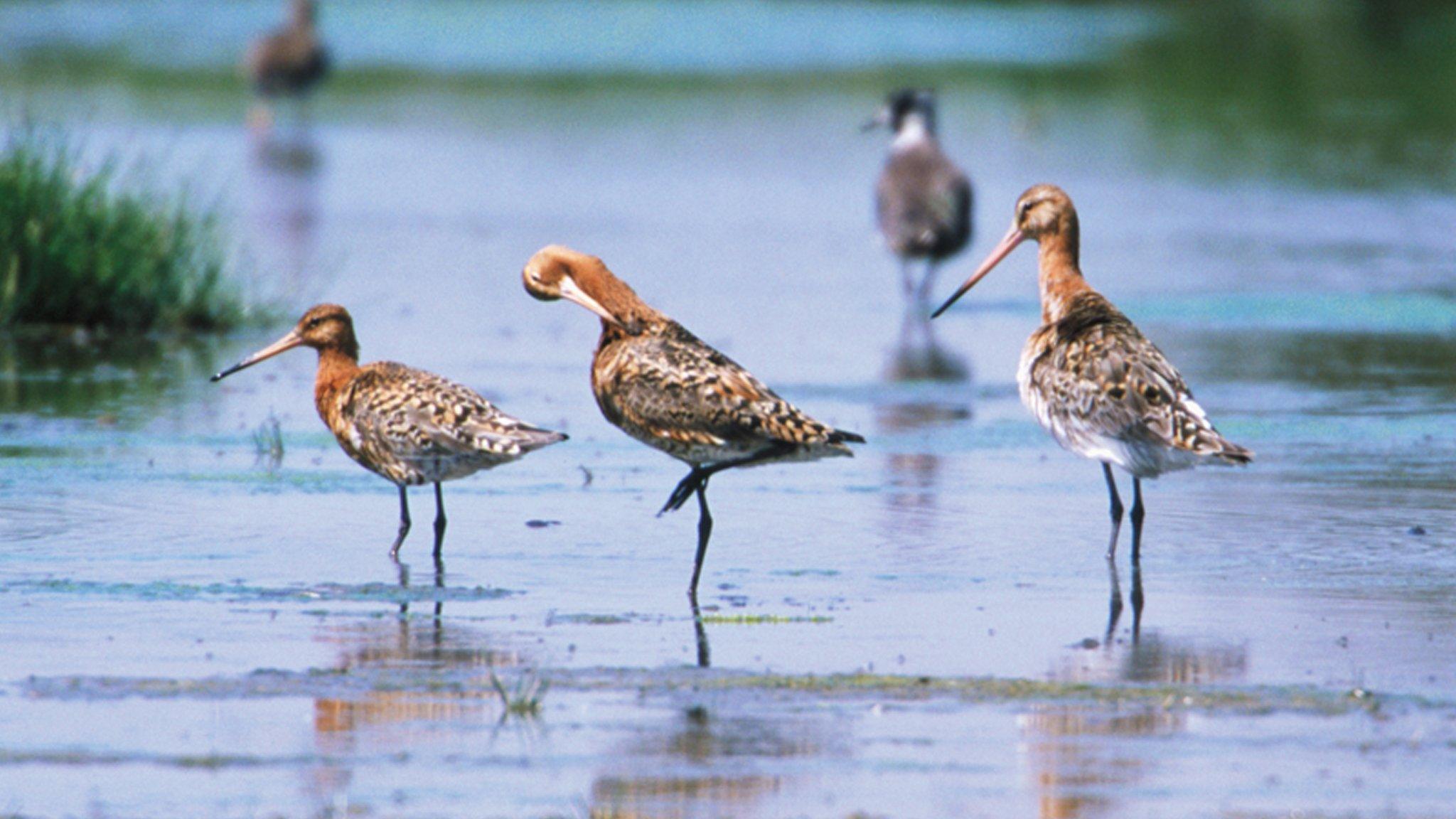
- Published4 November 2015
- Published9 December 2014
